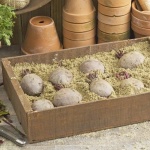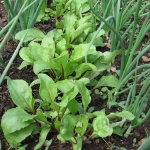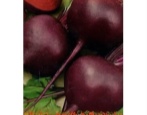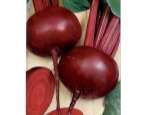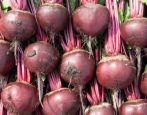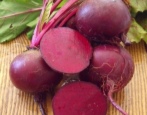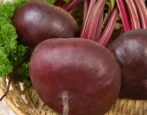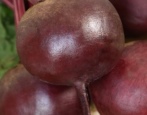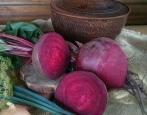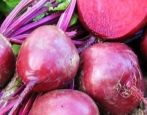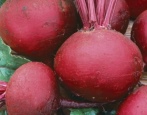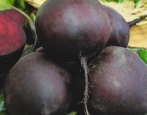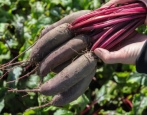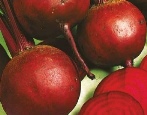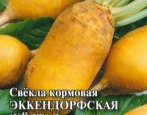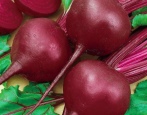
- Year of approval: 1998
- Leaf rosette shape: semi-upright
- Leaves: medium, light green, moderately wavy edges
- The form: cylindrical
- Weight, g: 250-600
- Pulp color : dark red
- Ringiness: without rings
- Taste qualities: good and excellent
- Appointment: for culinary processing, for canning, for fresh use
- Storage: suitable for winter storage
Cylinder beets are ideal for growing in temperate regions. Differs in high yield, excellent taste of root crops and resistance to harsh conditions.
Breeding history
The cylinder was brought out by breeders from Holland. For the first time the variety was obtained in the last century, in 1998. Today the culture is included in the State Register of Russia, in demand among domestic gardeners.
Description of the variety
The key feature of the Cylinder beet is its compact size, which makes it possible to plant the variety even in small garden plots. Other characteristics include:
- rich green leaves;
- roots half sticking out of the ground;
- simple harvesting.
The variety belongs to a group of plants with a medium-early ripening period, which is one of the advantages of the culture.
Characteristics of the appearance of the plant and root crops
Compact tops do not prevent the variety from forming rather large and juicy fruits. Beet characteristics:
- shape - mostly cylindrical, slightly elongated;
- length - 16 cm;
- weight - from 250 to 600 g;
- the skin is rather dense, albeit thin, dark red in color.
Under the skin there is a pulp of exactly the same color, which lacks rings and other identifying features that are found in other varieties.
Purpose and taste of tubers
The flesh of Cylinder beets is quite juicy and delicate in taste, which was noted by the tasters. Root vegetables are often used to prepare various salads and main courses. Also, beets can be frozen and retain their properties.
The unique property of the variety is that the roots can be cooked in just a few minutes, and at the same time they will not lose their shade. After boiling, the vegetable can be stewed, and the beets will acquire an unforgettable taste.
Maturation
Usually the variety forms roots in 105-115 days. However, planting beets through seedlings in open ground leads to a 3-week reduction in time. This method is resorted to in the northern regions, where planting beets with seeds is quite dangerous.
Yield
The average yield per square meter of the garden bed reaches 8-10 kg, subject to the necessary recommendations for growing crops. In more southern regions, it can be lifted up to 12 kg.
Growing and care
The main cultivation method for Cylinder beets is seeds, which are immediately placed in open ground. However, in the northern regions, gardeners prefer to grow crops with seedlings so that the seeds do not die in insufficiently heated soil.
Seeds are planted mainly in the spring, but in some cases they are buried in the ground in the fall, leaving small roots of the future plant to form for the winter. Landing scheme:
- leave a distance of 30 cm between the rows;
- maintain a distance of 10 cm between seeds;
- the maximum planting depth should be 5 cm.
Before planting, it is recommended to select and process seeds in order to strengthen their immunity, as well as fertilize and loosen the soil. All this contributes to the rapid establishment of the culture in the soil and the active growth of roots. It is better to plant 2-3 seeds in each hole so that one of them will definitely take root.
When the seeds or seedlings are planted, it remains to organize the care of the crop. Basic moments.
- Watering. Beets are not demanding for frequent watering, however, they are quite whimsical to the composition of the liquid introduced into the soil. On average, the variety is watered 1-2 times a week in the morning or evening. Gardeners recommend adding calibrated salt before each watering, which promotes the active growth of the crop and protects it from pests. Watering should be stopped about 15 days before harvest.
- Thinning. The procedure should be carried out if too many beets have sprouted in the garden. Thinning is started mainly on cloudy days, since it is easier to do this in loosened soil.
- Top dressing. The plant needs regular fertilization, this is especially important during the period of active growth and formation of the root crop. Mineral formulations are usually used as fertilizers, but in moderate doses so that root crops do not accumulate nitrates.
It is also worth taking care of loosening the fertile soil and weeding the beds after each watering. This increases the plant's resistance to diseases and pests, and also accelerates the flow of useful components to the roots of the variety.

Beetroot tolerates cold snaps, therefore it is widely grown in the open field. When planting beets, you need to correctly determine the sowing time, choose a suitable place, prepare the beds, and do pre-sowing seed treatment.
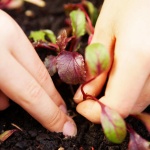
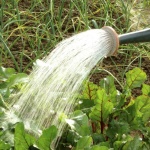
Required climatic conditions
It is better to start planting work in warm and sunny weather, when the air temperature warms up to 20 degrees Celsius. In this case, the sprouts can be seen after 4-5 days from the moment of planting.
Disease and pest resistance
Cylinder beet is a fairly resistant variety with strong immunity. But improper plant care can lead to the formation of various pathologies and active attacks of insects. To reduce the risk of such situations, it is worthwhile to provide for preventive treatments, as well as regular digging of soil.
For processing beets, special products are used, which can be purchased at a gardening store. Before use, you should carefully study the composition and dosage of the drug, so as not to harm the plant.

